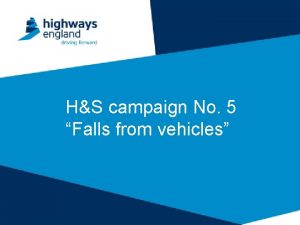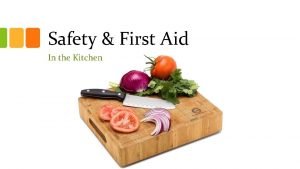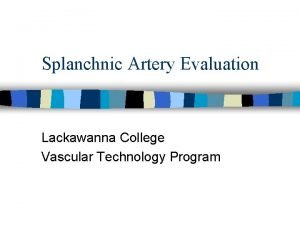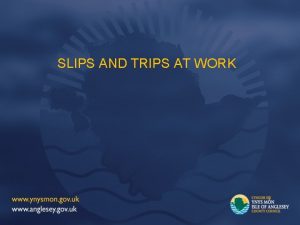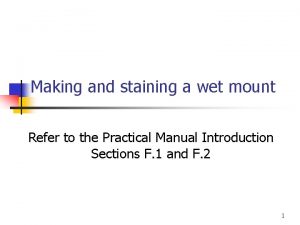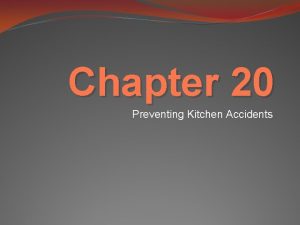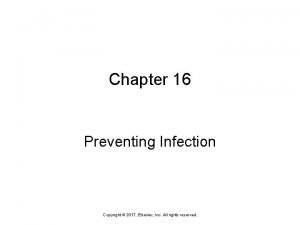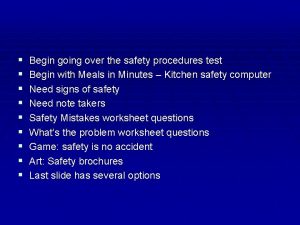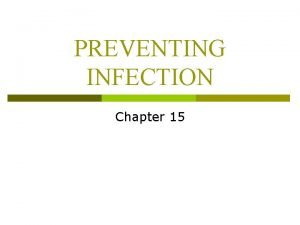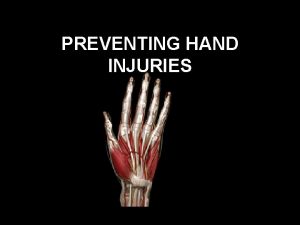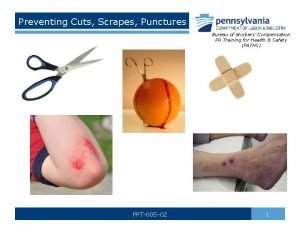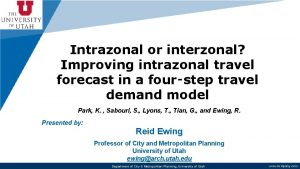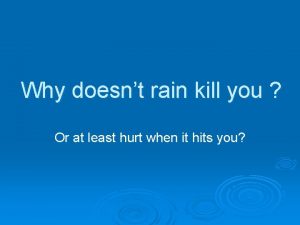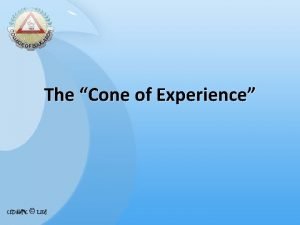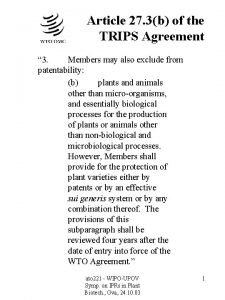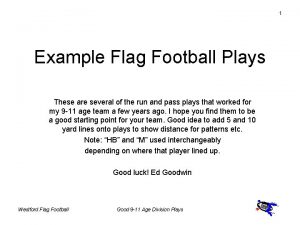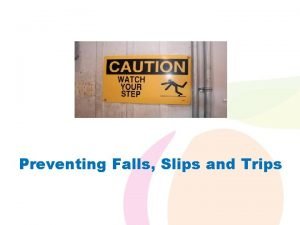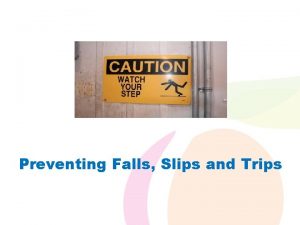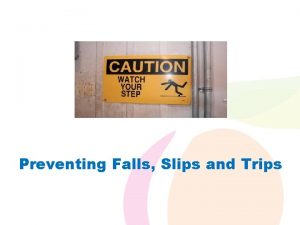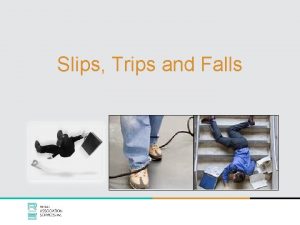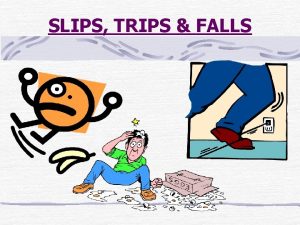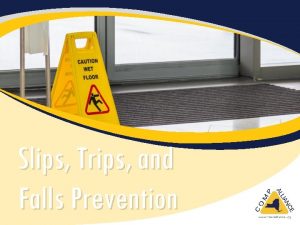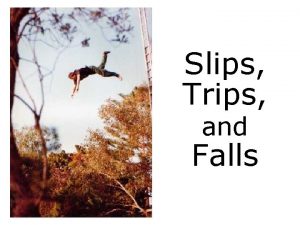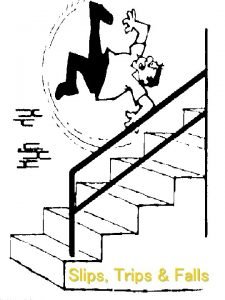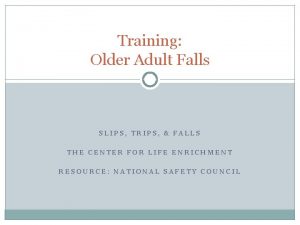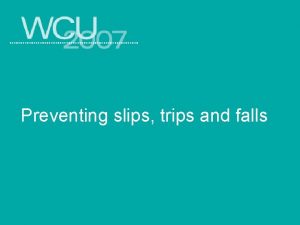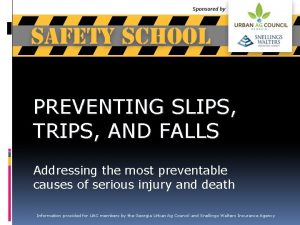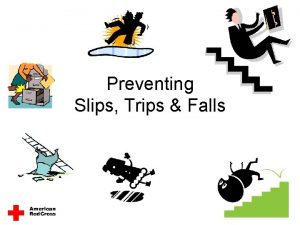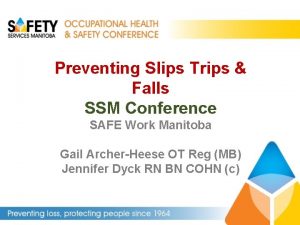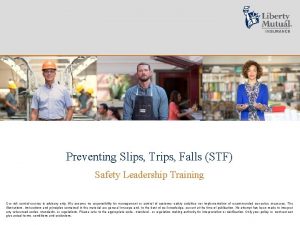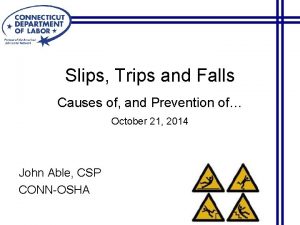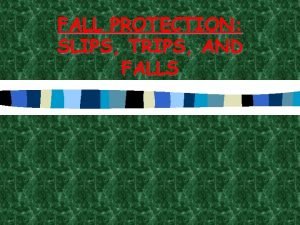Preventing Falls Slips and Trips FallsSlipsTrips FSTs You































- Slides: 31

Preventing Falls, Slips and Trips

Falls/Slips/Trips (FSTs) § You take hundreds of steps every day, but how many of those steps do you take seriously? § Please take a few minutes to understand how Falls/Slips/Trips happen. § YOU CAN PREVENT needless and painful injuries. Falls/Slips/Trips accounted for over $5, 485, 000 of Georgia’s Workers’ Compensation Injury costs, and over 25% of the total injuries for FY 2011. 2

Risk Management Services State of Georgia Worker’s Compensation Injuries FY 2011, FY 2012, FY 2013 3 www. doas. georgia. gov/risk

Risk Management Services State of Georgia FY 2013 Total Injuries 6062, Lost time injuries 1304 4 www. doas. georgia. gov/risk

ck ru St FY 2012 ns Bu r ll -A n tio rc a ll 99 88 77 91 116 163 168 189 172 179 208 233 210 196 227 251 347 373 352 315 289 408 Injury Breakdown Al te -A t ec bj O n io se ct ll -A ot M se ea is g e al lin. D O cc -F By iv et it ep n n rp tio d te ll -A lif /In al im An t. I gh au C so Ab ts ec -O bj 200 R By VA g in -L ift 400 392 802 834 1088 1143 1467 1445 . M s in pe 600 ra ra Sc ll -A 800 St e in e 1000 ur ct un -P St ra at m ll -A but some improvement ck s T /In nt ie at -P FS 1200 ut By 1600 C ru ck FST’s Still the leading injury, St ru St Risk Management Services Areas for Improvement State of GA Top 15 Injuries (FY 12 vs FY 13) 1400 0 FY 2013 5 www. doas. georgia. gov/risk

Risk Management Services BOR Injury Totals (last 5 years) 1600 1400 1200 Total Injuries 1000 Medical Only 800 Lost Time Injuries 600 400 200 0 FY 2009 FY 2010 FY 2011 FY 2012 FY 2013 6 www. doas. georgia. gov/risk

Risk Management Services 7 www. doas. georgia. gov/risk

Risk Management Services 8 www. doas. georgia. gov/risk

Risk Management Services 9 www. doas. georgia. gov/risk

Definition of FSTs When there is too little friction or traction between your feet (footwear) and the walking or working surface, and you lose your balance. Fal l p Sli Occurs when you are too far off your center of balance. . When your foot (or lower leg) hits an object and your upper body continues moving, throwing you off balance. When you step down unexpectedly to a lower surface (Misstep) and lose your balance, e. g. , stepping off a curb. Trip Definition of FST Friction: The resistance encountered when an object (foot) is moved in contact with another (ground). Friction is necessary in order to walk without slipping. 10

Two Types of Falls Fall-at-the-same-level Fall-to-lower-level When you fall to the surface you are walking or standing on, or fall into or against objects at or above the surface. When you fall to a level below the on which you are walking, working, or standing. Slip-resistant strips on steps For example: • Steps or stairs • Ladder • Platform • Loading dock Skid-resistant coating on • Truck bed ramp. Note highlighted edges for better visibility 11 to prevent walking off ramp and falling.

Can F/S/Ts be prevented? • YES! • We will discuss a few prevention strategies. • Housekeeping, Footwear, Maintenance are the main three issues to be addressed. • HOWEVER, THE BIG #4 IS INATTENTION! Do not text while walking or on stairs. Look where you are walking. Use handrails while on stairs. 12

SLIP Prevention § Avoidance! Go around when possible! The few seconds you save will not make up for hours of recovery from a fall. § Weather conditions may cause the floors to be wet. Use caution at building entrances, parking lots and walkways. § Watch where you are stepping and use caution on wet floors to avoid slipping. 13

Causes of Slips • Ramps and gang planks without skid/slip-resistant surfaces • Metal surfaces, such as duckboards and dock plates, platforms, construction plates or covers on sidewalks and roads Metal has a lower force of friction/traction and can be more slippery than many other materials. Metal surfaces can become smooth and slippery with wear, and are extremely 14 slick when wet, muddy, or greasy.

Causes of Slips • Mounting and dismounting trucks, tractors, heavy equipment, machinery • Getting on and off truck trailers & truck beds • Climbing up and down ladders Metal rungs, steps, footholds, treads, running boards, platforms on equipment and ladders become even slicker when worn, smooth and contaminated with water, mud, oil, grease, dirt, and debris. 15

Causes of Slips • • • Loose, irregular surfaces, such as gravel Sloped or uneven terrain, sidewalks Muddy terrain Weather hazards: rain, sleet, ice, snow, hail, frost Leaves, pine needles, plant debris (especially if wet) 16

TRIP Prevention § Make sure that steps you use often are in good shape and that items (that do not belong on the steps) are out of the way. § Use handrails when ascending or descending stairs. § Damaged steps or misplaced items are major factors in trips. Report any problems to supervision or maintenance. 17

Causes of Trips and Missteps Steep stairs (52 -degree slope) with tall steps. Note that it is also missing a handrail on the left and a mid-rail on the existing one. § Damaged steps § Taller or shorter steps (varying rise – only takes ¼ of an inch to cause a trip) § Shallower tread depth § Otherwise irregular Over 2. 5 million falls on stairways result in about 2 million disabling injuries yearly. 18

Trips in Parking Lots and Garages Unmarked elevation changes: • speed bumps • curbs • wheelchair accessible Speed bumps Curbs ramps • driveways Wheelchair accessible ramp 19

FALL Prevention § Eliminate the hazard when possible (i. e. broken chair, unstable ladder, etc. . . ). § Practice good judgment - Don’t lean back in chairs. § DO NOT climb on chairs, unstable shelving or tables. § Make sure you can see your path 20 of travel.

Housekeeping ▪ Close file cabinets or storage drawers ▪ Cover cables that cross walkways ▪ Keep work areas and walkways well lit ▪ Replace burned out bulbs ▪ AVOID using improper cleaning methods (e. g. , incorrectly using wax or polish; or trying to clean up grease spill with water). 21

Housekeeping DON’Ts………… § Propping fire doors open. § Storing materials in stairwells. § Storing trash cans in front of the doorway. § Using cinderblocks to prop open the doors. Do……… Report these dangers! 22

FOOTWEAR § Use good judgment with regard to footwear while on duty. § Be certain footwear is in good condition and appropriate to your job function and outside weather conditions. § Match the shoe to the hazards. Use steel toes and steel soles where necessary. 23

Human Factors Increasing the Risk of Slips And Trips Footwear Taps on heels Slick smoothsurfaced soles High heels Footwear that may not be suitable for the environment (reduced traction) 24

Behaviors • Behaviors – actions you choose and control can contribute to a slip, trip, and fall injury if you set yourself up for one. • Carrying or moving cumbersome objects, or too many objects that obstruct your view, impair your balance and prevent you from holding onto handrails. • Inattentive Behavior: walking, distractions (e. g. , using cell phone, talking and not watching where you’re going, etc. ). • Taking shortcuts: not using walkways or designated, cleared pathways, being in a hurry, rushing around. 25

WHAT CAN YOU DO? § If something is creating a potential fall, slip or trip hazard fix it (clean it up; move it). § Place signs or barricade to warn others of the potential hazard. § If you cannot fix it, contact building management so that they are aware of the problem. 26

Fall, Slip and Trip Hazard PROBLEM Slip: if it is wet outside and the mat is folded back, then the floor is getting wet instead of the mat absorbing the water. Trip: the mat is folded back and someone could catch their foot on the mat and trip. Fall: both a wet floor and caught foot could contribute to a fall. FIX! Or Report this danger! 27

Notify Supervisor § Employees should immediately report all work related injuries to their supervisor. § Report the unsafe conditions to the property management to get the problem fixed. § Just a few items to think about as we go through the day to improve your Safety. § ALWAYS Think Prevention! 28

OTHER HAZARDS § Prevent a potential injury by cleaning up spills and wet floors. § Keep aisles and walkways clear of clutter or obstructions. § Pick up objects and move extension cords to eliminate the potential for injury. §Secure loose rugs or mats. 29

Other Factors • Health and physical condition can impair a person’s vision, judgment, and balance. • Eyesight, visual perception • Age • Physical state, fatigue • Stress, illness • Medications, alcohol, drugs 30

Risk Management Services Questions? Contact Information C. G. Lawrence, III, MS, CSP, REM, ARM-P Chief Loss Control & Safety Officer (404) 657 -4457 Charles. Lawrence@doas. ga. gov 31 www. doas. georgia. gov/risk
 Slips trips and falls presentation
Slips trips and falls presentation Hse slips trips and falls video
Hse slips trips and falls video Importance of first aid in the kitchen
Importance of first aid in the kitchen Median arcuate ligament
Median arcuate ligament Detention slips
Detention slips Tripsatwork
Tripsatwork Cover slips drawing
Cover slips drawing Freudian slip meaning
Freudian slip meaning Freudian slips
Freudian slips Freudian slips
Freudian slips Chapter 24 lesson 2 preventing and treating stds
Chapter 24 lesson 2 preventing and treating stds Chapter 9 lesson 2 resolving conflicts
Chapter 9 lesson 2 resolving conflicts Chapter 14:3 observing fire safety
Chapter 14:3 observing fire safety Chapter 9 resolving conflicts and preventing violence
Chapter 9 resolving conflicts and preventing violence Chapter 13:2 preventing accidents and injuries
Chapter 13:2 preventing accidents and injuries Words that rhyme with stranded
Words that rhyme with stranded Chapter 20 preventing kitchen accidents
Chapter 20 preventing kitchen accidents Chapter 16 preventing infection
Chapter 16 preventing infection Preventing kitchen accidents worksheet
Preventing kitchen accidents worksheet Max scheler empathy theory
Max scheler empathy theory Chapter 4 preventing injuries through fitness
Chapter 4 preventing injuries through fitness Chapter 15 preventing infection
Chapter 15 preventing infection Preventing hand injuries
Preventing hand injuries Preventing cuts
Preventing cuts Preventing ageing unequally
Preventing ageing unequally Which is mainly responsible for preventing erosion
Which is mainly responsible for preventing erosion Intrazonal vs interzonal
Intrazonal vs interzonal Can rain kill you
Can rain kill you What is cone of experience
What is cone of experience School trip normandy
School trip normandy Article 27 of trips agreement
Article 27 of trips agreement Arrow c
Arrow c

